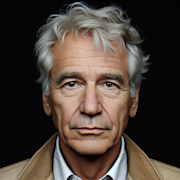The Art of Projection: The Evolution of Movie Theaters and Cinemas

In today’s digital age, streaming services like Netflix and Hulu have made it easier than ever to watch movies from the comfort of our own homes. However, there is something magical about the experience of watching a film on the big screen in a movie theater. The evolution of movie theaters and cinemas over the years has been a fascinating journey, from the early days of silent films to the modern multiplexes we see today.
The Early Days of Movie Theaters
The history of movie theaters can be traced back to the late 19th century, when the first commercial motion picture exhibition was held in Paris in 1895. This event marked the beginning of what would become a global industry, as filmmakers and exhibitors began to realize the potential of showing films to a paying audience.
The Rise of Silent Films
In the early 20th century, silent films dominated the movie industry, and theaters began to spring up all over the world to accommodate the growing demand for this new form of entertainment. These early movie theaters were simple affairs, often little more than converted storefronts with a makeshift screen and a few rows of seats. However, as the popularity of cinema grew, so too did the sophistication of movie theaters.
The Golden Age of Hollywood
The 1920s and 1930s are often referred to as the Golden Age of Hollywood, a time when the movie industry was at its peak and audiences flocked to theaters to see the latest blockbusters. During this time, grand movie palaces were built in major cities across the United States, with elaborate decor and state-of-the-art projection equipment that made the moviegoing experience truly special.
The Rise of Cinemascope and Technicolor
In the 1950s and 1960s, advancements in film technology led to the introduction of widescreen formats like Cinemascope and vibrant color processes like Technicolor. These innovations transformed the movie theater experience, allowing filmmakers to create larger-than-life images that wowed audiences and kept them coming back for more.
The Modern Multiplex
Today, movie theaters have evolved into the modern multiplexes we are familiar with, featuring multiple screens showing a variety of films at any given time. These state-of-the-art theaters boast crystal-clear digital projection, immersive sound systems, and comfortable stadium seating that make going to the movies a truly enjoyable experience.
In conclusion, the evolution of movie theaters and cinemas over the years has been a testament to the enduring appeal of the big screen. From the humble beginnings of silent films to the modern multiplexes of today, the art of projection continues to captivate audiences and bring stories to life in a way that no other medium can. So next time you have the opportunity, why not step away from your living room and experience the magic of the movies in a theater near you?

Desmond van der Walt
Journalist
More From Classics Authority Movies

Movie
Raiders of the Lost Ark (1981)

Movie
Ben-Hur (1959)

Movie
American History X (1998)

Movie
Vintage Vampires: The Evolution of Classic Horror Films

Movie
Hollywood's Golden Couples: Classic Movie Stars Who Found Love on Set

Movie
Sunset Blvd. (1950)





